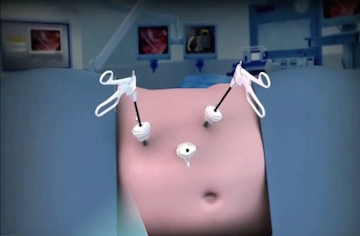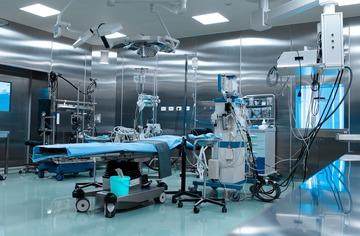Complications of TURP
Complications following benign prostatic hyperplasia surgery – this subject is very important for all men planning to undergo transurethral resection or open surgery for benign prostatic hyperplasia. This article outlines all of the main complications that may arise following benign prostatic hyperplasia surgery, including post-surgery period and rehabilitation following transurethral resection of benign prostatic hyperplasia.
Removal of benign prostatic hyperplasia: complications
In my surgical practice I stick to one simple rule: if the patient requires surgical intervention I always mention all possible risks and complications and insists that they make the decision not straight away but on the following day at the earliest. This is because the patient need to make a conscious decision and to do this they need to be aware of all the risks and be able to access them. This leads to the best doctor-patient interaction and leads to better treatment results.

As for complications specifically arising after benign prostatic hyperplasia removal we always discuss mild post-surgery complications as well as serious complications and ways to overcome them. Pain and urinary incontinence following TURP, inflammation and high temperature, bleeding and visible blood in the urine , rehabilitation and diet following surgery – all of this needs to be discussed in detail.
Post-surgery period following transurethral resection of the prostate
TURP syndrome
The most common surgical procedure to treat benign prostatic hyperplasia is transurethral resection of the prostate also known as TURP. The most serious possible complication following this surgery is TURP syndrome which manifests as water intoxication. It occurs as a consequence of the absorption into the prostatic venous sinuses of the fluids used to irrigate the bladder during the operation. This a rare but potentially life-threatening complication. Isotonic fluid which is charged with monopolar energy causes the breakdown of red blood cells and disrupts electrolyte balance in the blood. This can be fatal especially for people with pre-existing heart conditions. Despite of the fact that TURP syndrome only occurs in less than 0,3% of patients this complication is often the reason why patients refuse TURP.
Hospitalisation following TURP
If in the past when only monopolar transurethral resection was used patients would spend 7 to 10 days in hospital, modern technology allows us to cut the time of hospital stay to 1-3 days. The same applies to the urinary catheter during post-surgery period following TURP. These days we only leave it for 24-48 hours.
During post-surgery period patients sometimes will notice some blood present in the urine and in rare cases dripping urine and frequent urination. These usually pass after 2 to 4 weeks and do not come back.
Pain following TURP surgery
Pain following TURP usually occurs due to several factors: use of a rubber catheter, inflammation, overfilling of the bladder and lack of timely pain relief.
Bleeding following TURP surgery
During transurethral resection of the prostate some tissue is removed using a special loop. Of course, this leads to some capillary damage and some blood loss. However, bipolar and plasmakinetic types of surgery allow us to seal the blood vessels at the same time as cutting. His allows us to avoid any significant blood loss and at the same remove all of the affected tissue.
High temperature following the removal of benign prostatic hyperplasia
Any surgical intervention can lead to inflammation and as a result to rising body temperature. This is why we perform urine and blood tests before the operation which allow us to rule out any inflammation.
We prescribe broad spectre antibiotics prior to the surgery and the patient continues to take them for 5 to 7 days post operatively.
Complications following benign prostatic hyperplasia surgery (TURP)
Urinary incontinence following TURP
Urinary incontinence following TURP surgery is usually the result of the urethral sphincter damage. Most often this complication occurs following the use of monopolar resectoscope, while bipolar or plasma methods being mostly problem free usually help avoid this.
The treatment for urinary incontinence following TURP surgery consists of Kegel exercises for men but these should not be started until 2 or 3 weeks have passed following the surgery.
Frequent urination following benign prostatic hyperplasia removal.
This complication is usually due to two factors: receptor irritation following TURP and the bladder being “used” to strong contractions. Frequent urination usually develops in 20-30 patients and usually resolves itself after 1-2 weeks following TURP surgery.
Cloudy urine following TURP surgery
This is not really a complication but a pretty standard situation. Following TURP surgery, maximum 1 month later, the urine turns cloudy. There is nothing worrying about it but your doctor must be informed if this happens. Cloudy urine or blood in the urine following TURP surgery are due to the scabs that formed on the surface of the affected area of the prostate coming away. One could compare it to a knee scab falling away after the skin underneath it heals. When you cut or scrape your knee the scab falls off after 1 or 2 weeks. The same thing happens with the scab following TURP surgery but unlike the knee the prostate scab is constantly irrigated by urine and this causes urine to become cloudy.
Urethral stricture following TURP
This complication most often occurs when the surgery is performed by an inexperienced urologist or the equipment used is not up to date. The cause of this complication is electrosurgical damage of the urethra. Urethral stricture requires another surgery.
Recovery following TURP surgery
Usually no special recovery period is required following TURP surgery. In most cases patients go back to work about a week after the operation. Many patients ask if their erectile function will be affected by TURP. The answer is no. After correctly performed bipolar or plasma resection erectile function significantly improves in most cases, which is due to the blood flow to the penis returning.
Professional Approach: Modern diagnostics methods and minimally invasive treatment.
Our team: Specialised group of endourologists.
Board of doctors: for ensuring safety of all patients even the elderly ones.
Equipment: Bipolar and plasmakinetic resectoscopes by Karl Storz and Olympus.
Comfort: no queuing to be admitted to our premium hospital facility.
Safety: we only use methods recommended by professional associations such as EAU and AAU
Result: getting rid of benign prostatic hyperplasia and its complications.
And also, GCP certification confirming the highest standards of diagnosis and treatment




